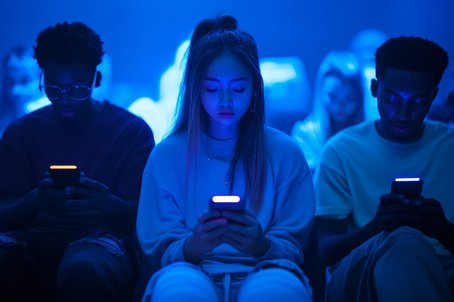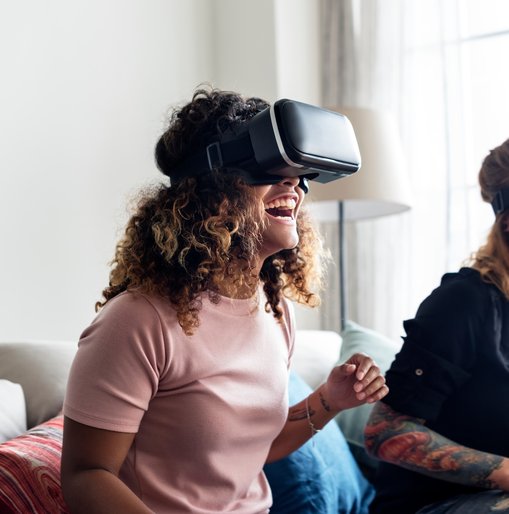Designing for the Mind: Why Neurodiversity Should Be at the Heart of Every Digital Experience

I’ve always believed that good design is about more than just how something looks, it’s about how it works, for everyone.
As a dyslexic designer, I’ve spent my career translating complex ideas into simple, inclusive experiences. It hasn’t always been easy – I've had to navigate a digital world that wasn’t built with minds like mine in mind. But that lived experience has become my superpower. It fuels my empathy. It shapes my process. And it’s what makes me an advocate for neurodiverse design.
Because the truth is, when we design for neurodiversity, we make things better for everyone.
What is neurodiversity, really?
Neurodiversity is the idea that neurological differences – like autism, ADHD, dyslexia, dyspraxia, and others – are natural variations of the human brain. It’s not a problem to be solved. It’s a perspective to be understood, respected and, most importantly, included.
For neurodivergent people, the digital world can often feel like it wasn’t made for them. And the truth is, it often wasn’t.
Around 1 in 7 people in the UK (more than 15% of the population) is neurodiverse. That’s millions of people who may be silently struggling to navigate websites, access services, or take part in digital spaces that weren’t built with their needs in mind. A confusing interface or inaccessible form isn’t just annoying, it can stop someone from getting the support they need.
The digital divide: where we’re falling short
Too many digital experiences are still built with the 'average user' as the default. That's not just outdated, it’s exclusive.
Some of the most common barriers include:
- Overstimulating design: Excessive motion, cluttered layouts, and information overload can lead to anxiety or cognitive fatigue.
- Inconsistent interfaces: Irregular navigation or design patterns make experiences unpredictable and harder to trust.
- Time-limited tasks: Countdowns or rushed processes can shut people out entirely.
- Complex, jargon-heavy language: Dense copy can make understanding needlessly difficult.
- Sensory triggers: Autoplay videos, flashing elements, or harsh colours can be actively distressing.
Each of these may seem minor. But for someone with sensory processing challenges or attention differences, they can turn an everyday task - like signing up, donating, or reaching out for help - into a painful experience.
The future of inclusive design: expanding the conversation
It’s time to stop treating inclusive design as a checklist and start seeing it as an evolving, strategic imperative.
The next frontier of accessibility is not just about visual contrast or screen readers. It’s about neuroinclusion - recognising the full spectrum of human experience, and designing systems that are adaptable, respectful, and empowering.
We’re already seeing early signals:
- Big tech is introducing more personalisation tools like reduced motion and reading modes.
- Inclusive AI is on the rise, with tools aimed at supporting neurodivergent users’ needs through adaptive interfaces and natural language.
- Neurodivergent creators and advocates are pushing for design leadership roles and co-creation models.
Charities and ethical organisations should be at the forefront of this shift - not just keeping up, but shaping the future of inclusive digital experiences.
So what does good look like today?
Here are a few design principles I always champion when working on a project, whether it’s a charity website, a donation flow, or a digital tool:
Clarity over cleverness
Plain English, clear headings, and simple sentence structures go a long way. It’s not about “dumbing down”, it’s about opening up.
Visual hierarchy that works for real brains
For people like me with dyslexia, too much clutter is overwhelming. Chunk content. Use whitespace. Let the eye breathe.
User choice and control
Give users control — font size, dark mode, spacing. These small details make a big difference for people with sensory sensitivities or processing differences.
Minimise sensory distractions
Turn off autoplay. Avoid flashing content. Keep key user journeys (like donations or contact forms) as calm and focused as possible.
Let people go at their own pace
Avoid unnecessary time pressure. Allow people to pause, return, or extend sessions when needed.
Build with neurodivergent users, not just for them
It sounds obvious, but if you don’t include neurodivergent people in your user testing, you’re missing key insights.
Why this matters more than ever
Neuroinclusive design is not only the right thing to do, it’s the smart thing to do.
For charities and ethical organisations, this approach helps you:
- Reach more people, in more meaningful ways
- Build deeper trust with communities often excluded from digital spaces
- Make your services more accessible, usable, and impactful
- Stay ahead of accessibility legislation, including WCAG 2.2 and beyond
- Lead by example in designing a more just, inclusive digital future
This is about more than access, it’s about dignity, empowerment, and digital equity.
From awareness to action: designing for difference
We’re living in an age where digital experiences are often the front door to everything, from information and connection to support and change-making.
If that front door is only open to some, we’re failing the very people we set out to serve. Neurodiversity reminds us that there is no “normal” user, just people with different ways of thinking, processing and interacting with the world.
Designing for neurodiversity isn’t a niche effort. It’s a bold, future-forward move that strengthens your impact and aligns with your values. When we design with neurodivergence in mind, we don’t just include more people, we build better, kinder, more intuitive experiences for everyone.
Looking for support to design accessible, inclusive digital experiences?
Whether you're starting a new project, or improving an existing one, our team at Giant Digital is here to help. Let's design something that works for every mind.
Let's chat




